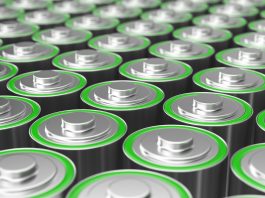Researchers from Tokyo Metropolitan University have successfully demonstrated a damage-free method that enables lithium metal batteries to be used in electric vehicles.
They discovered that electrochemical impedance spectroscopy (EIS) is a powerful, non-destructive tool when studying the degradation processes of solid-state lithium metal batteries. The study specifically identifies the interface responsible for the battery’s drop in performance.
This new discovery enables a new generation of electric vehicles to be created, overcoming previous engineering issues that prevented lithium metal batteries from being used in them.
The role of LI metal batteries in electric vehicles
Electric vehicles are a key advancement in reducing carbon emissions, with their most crucial component being the battery.
The use of lithium metal batteries in electric vehicles would maximise their potential. They can provide higher energy density, safety and lower complexity, but technical issues harbour their chances of becoming the most common vehicle type.
The biggest problem is the large interfacial resistance between electrodes and solid electrolytes. Both materials are composed of brittle ceramics, leading to a lack of good contact between them. Scientists find it difficult to identify which interface is causing problems.
Studying the degradation process in lithium metal batteries is also challenging. The process requires cutting them open, which makes it impossible to find out what is happening while the battery is still in working condition.
How does EIS overcome these technical issues?
The team have been developing solid-state batteries with lower interfacial resistance through a technique called aerosol deposition, where microscopic chunks of cathode material are accelerated towards a layer of ceramic electrolyte material, colliding and forming a dense layer.
To overcome the issue of cracks forming on collision, the team coated the chunks of cathode material with a ‘solder’ material, that is, a softer, low melting point material which can be heat treated to generate excellent contact between the newly formed cathode and electrolyte.
The results show that lithium metal batteries maintain a high-capacity retention of 87% after thirty cycles. The researchers say this is the best result for lithium metal batteries with ceramic oxide electrolytes and is a crucial development in understanding how they might degrade.
The researchers then used EIS to interpret how lithium metal batteries respond to electrical signals of different frequencies. This enabled them to separate the resistance of different interfaces in the battery and they found that the increase between cathode material and the solder were the main reason for cell capacity decay.
Because they were able to identify this without cutting the battery open, researchers have identified a damage-free and widely available method. This promises exciting new advancements towards the use of lithium metal batteries in the next generation of electric vehicles.









